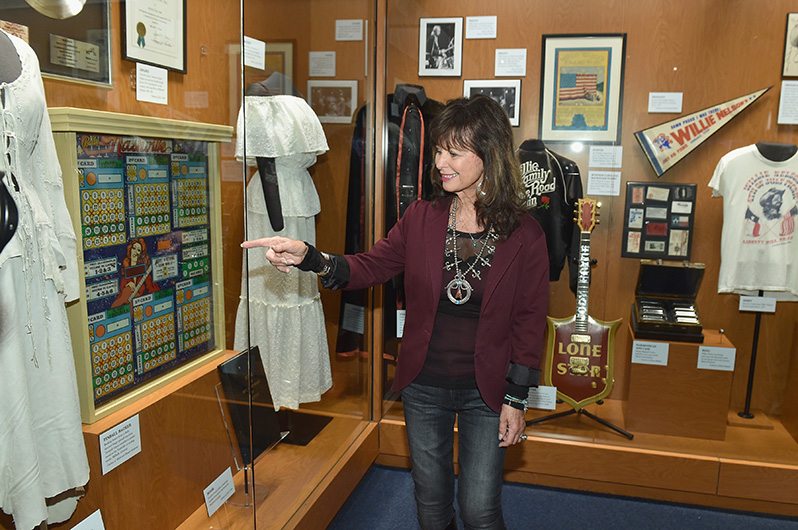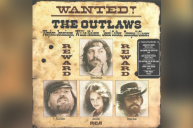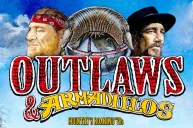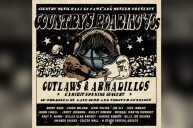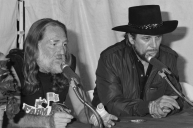The Country Music Hall of Fame and Museum in Nashville strives to paint as robust a picture of country music history as possible. And in its new exhibit, the museum honors figures from a period of country music that even today comes shrouded with misconceptions and marketing ploys: "outlaw country."
Videos by Wide Open Country
Dubbed Outlaws & Armadillos: Country's Roaring 70s, the phenomenal exhibit opened in May of 2018 for a three-year run. A grand opening celebration featured performances from Joe Ely, Jessi Colter and Shooter Jennings.
The exhibit features never-before-seen artifacts and media displays focusing on some of country's most stories artists and writers. It also focuses heavily on Texas and Austin's role in country's creative (and often conflicting) boom in the 1970s.
Country's Lesser Known Legends
The museums's Peter Cooper and Michael Gray co-curated the event alongside Austin filmmaker Eric Geadelmann. And perhaps the most charming aspect of the exhibit is a focus not just names like Willie, Waylon, Kristofferson and Clark, but also Texas legends like Doug Sahm and Paul Buskirk.
Outlaws & Armadillos features a robust history of Austin's Armadillo World Headquarters, which many considered Texas' ground zero for the cross-pollination of rock n' roll and country that dominated the 1970s. And it should, cause it's in the name.
But it also features panels and moments dedicated to people like Hondo Crouch and Luckenbach. Any Hill Country native might shed a tear at the site of Kent Finlay and Cheatham Street Warehouse's corner of the exhibit. And most people might know Shel Silverstein as a friendly children's author, but as the exhibit points out, there were many sides to the beloved figure.
And did you know legendary University of Texas football coach Darrell K. Royal was a huge advocate for all the hairy hippies descending upon Austin to make music? In fact, Royal helped bridge the gap between Austin's typically stuffy elite and the new creative class. Royal even hosted a "guitar pull" for songwriters, who then scratched their name into his guitar. It's right there on display next to one of his infamous windbreaker jackets.
Read More: 10 Artists Who Defined Outlaw Country
Redefining The Era
It's easy to think of outlaw country as a certain sound or style. But as the new exhibit shows, "outlaw" was never even really a name the era's biggest players embraced.
Instead, the exhibit paints the 1970s country era as one between two conflicting ideologies. On one hand, you had the major labels looking to control who released what songs recorded and which facilities and written by certain writers. On the other, you had artists and independent studios embracing the inclusivity of collaboration.
And while Austin and Texas felt like the perfect place for creative inclusivity (being so far away from Nashville), the movement lived everywhere. Even just down Music Row's road at Tompall Glaser's "Hillbilly Central." Or the infamous Exit/In, a club at the time that was the Nashville embodiment of "we play whatever, whoever, whenever."
The exhibit even makes mention of Willie Nelson's album Stardust. A record of jazz and pop classics that embraced Nelson's late '70s love of California, the album might've been the most "outlaw" thing Nelson recorded.
Must-See
The Country Hall of Fame and Museum does an extraordinary job of capturing the full, inclusive view of country's history while also making it digestible. And while the 1970s were one of the most creatively exciting decades in country music, it's also a lot to handle.
The Outlaws & Armadillos exhibit is a must-see, even for longtime country fans who think they've heard all the stories of the era. It's almost impossible to not get goosebumps looking at some of the never-before-seen artifacts.
Guy Clark fans will feel the hair raise on their arms at site of his denim shirt or the guitar Susanna Clark used to write "Old Friends." Willie Nelson's blue sneakers proudly sit on display almost as a microcosm of the entire point of the event. If you think you know "outlaw," visit the exhibit and think again.
The Outlaws and Armadillos exhibit is open at the Country Music Hall of Fame and Museum until February 14, 2021.
This article was originally published in 2018.
